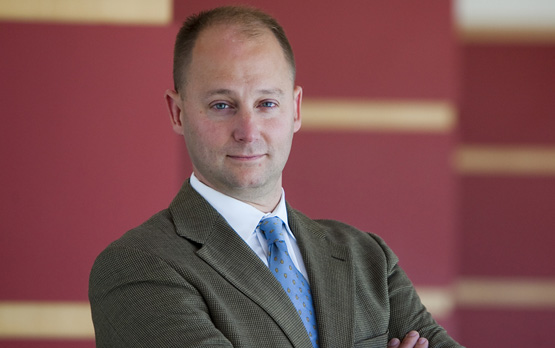
Man Walks Again After Surgery to Reverse Muscle Paralysis
By:
- Jackie Carr
Published Date
By:
- Jackie Carr
Share This:
Article Content
After four years of confinement to a wheelchair, Rick Constantine, 58, is now walking again after undergoing an unconventional surgery at University of California, San Diego Heath System to restore the use of his leg. Neurosurgeon Justin Brown, MD, performed the novel 3-hour procedure.
“Following a car crash, Mr. Constantine had a brain stem stroke that caused paralysis on the right side of his body. His leg muscles became so severely spastic that he could not walk,” said Brown, director of the Neurosurgery Peripheral Nerve Program at UC San Diego Health System. “Our team performed a delicate surgery to reduce input from the nerves that were causing the muscles to over contract to the point of disability.”
“After my injury, I was told I would never walk again. All I could to was move from my wheelchair to my bed or a chair,” said Constantine, a former NASCAR crew member. “After surgery with Dr. Brown, I could put my foot flat on the ground to walk. With physical therapy, everything just gets better and better. I'm a firm believer in never giving up.”
Prior to surgery, Constantine underwent botox treatments and physical therapy in an attempt to restore the use of his leg. The results were positive but minimal. An additional nerve conduction study, called an electromyogram (EMG), identified the muscles causing the dysfunction.
“When all other options did not produce satisfying results, we opted for surgery,” said Brown. “With the EMG, we identified the over-excited nerves that needed to be downgraded. Mr. Constantine had surgery on a Friday and within days was in physical rehabilitation. Two weeks later he was walking without a walker and has even completed a 1-mile race without assistance.”
The surgery, called a selective peripheral neurotomy, is a procedure performed under a microscope. Brown makes an incision behind the knee to reach the tibial nerve. He then selectively trims back the troublesome nerve branches by up to 80 percent. Cutting the nerve reduces the “noise” being relayed back to the spinal cord which causes the spasticity.
Brown, who also serves as co-director of the Center for Neurophysiology and Restorative Neurology at UC San Diego Health System, said the advantage to this approach is that the muscle is preserved and there is no need to cut or lengthen the tendon.
“Depending on the specific patient and their medical history, selective peripheral neurotomy may be appropriate for patients with brain and spinal cord injury from strokes or tumors, cerebral palsy, or multiple sclerosis.”
No special post-operative care is required as the sutures are absorbable. Rehabilitation can begin 72 hours after the procedure.
Constantine underwent physical therapy at VIP NeuroRehabilitation Center in San Diego.
The surgery, seldom performed in the United States, is more common in France and Japan. Brown has performed this surgery on six patients. Patients requiring information on this procedure should call 858-657-7000.
Share This:
You May Also Like
Stay in the Know
Keep up with all the latest from UC San Diego. Subscribe to the newsletter today.



